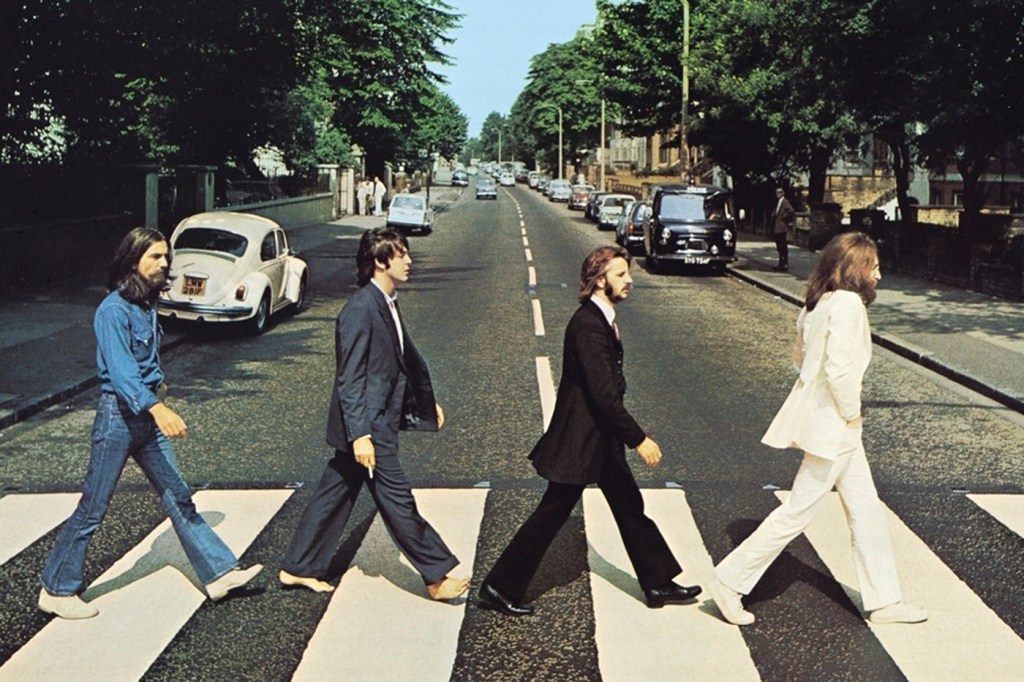How AI helped the Beatles revive John Lennon’s voice for their last song

Looks like The Beatles are getting by with a little help from artificial intelligence.
This week, The Beatles are releasing what is supposedly their last song ever, “Now and Then,” pulled together from recordings over the last few decades. Based on a lo-fi demo John Lennon recorded onto a boombox in his New York apartment in 1979, the song has been a long-held pipe dream for the remaining Beatles.
Now, by using AI to separate Lennon’s voice from his piano and ambient noise, they were able to clean up and revive the singer’s vocals.
And by combining Lennon’s voice with 1995 recordings of George Harrison and fresh recordings from Paul McCartney and Ringo Starr, fans will get the first “new” Beatles song in 27 years, since “The Beatles Anthology.”
“There it was, John’s voice, crystal clear,” McCartney said in the announcement for the song. “It’s quite emotional. And we all play on it, it’s a genuine Beatles recording. In 2023 to still be working on Beatles music, and about to release a new song the public haven’t heard, I think it’s an exciting thing.”
Deirdre Loughridge, an associate professor of music at Northeastern University who specializes in the history of music and technology and author of “Sounding Human,” says this use of AI isn’t new. It’s actually based on the technology Peter Jackson’s team used for the Beatles documentary “Get Back” that helped them strip away unwanted sound to get clean audio of the band talking, playing and arguing in the studio.
“For people who are familiar with how recording works, if you have two sounds recorded on the same recording, that’s it, you can’t do anything about it,” Loughridge says. “But now actually you can separate those sounds. It’s magical and transformational for what’s possible with sound recording.”

According to Loughridge, the technology works by training a machine learning algorithm on certain sounds and what they sound like when mixed together and separated. By hearing these sounds the algorithm learns sonic patterns that help it understand, for example, the differences between the sound of a bass, a guitar, drums, vocals or even the subtle hiss of ambient noise.
“By training a system on a bunch of examples like that where it learns what it sounds like separated, then you can give it new examples and have it separate and extract the audio you’re looking for,” Loughridge says.
In the case of The Beatles, the remaining members had access to Lennon’s demo, which his widow gave them on a cassette labeled “For Paul” in the 1990s when the surviving members were working on their retrospective “Anthology” albums. Two of the songs on that cassette, “Free as a Bird” and “Real Love,” made it onto the project and featured Lennon’s original vocals. “Now and Then” never did.
“It didn’t have a very good title, it needed a bit of reworking, but it had a beautiful verse and it had John singing it,” McCartney told Q Magazine in 1997. “[But] George didn’t like it. The Beatles being a democracy, we didn’t do it.”
The use of AI in music –– and the arts more broadly –– has become controversial over the past couple of years. An AI Drake and The Weeknd song racked up millions of plays –– and was quickly stamped down by the artists’ record companies. The technology has also raised questions about copyright and ownership.
Loughridge says the way The Beatles are using AI for “Now and Then” could open up new avenues for mixing live recordings and restoring other archival recordings. But it also includes its fair share of ethical questions, particularly when it comes to bringing the music of the past into the world of today.
“Music from different eras has a sound quality that’s partly the aesthetic, but it’s also partly the technology of that time that imparts that sound to it,” Loughridge says. “Now, it seems like … we’re going to hear this voice from a previous era, but with a sound quality of today.”
“I’m just interested in what it might do to our relationship to history, our feelings and intuitions about the past, when we can experience these materials from the past but with a quality of the present,” she adds. “It seems like something to grapple with.”
But given the many ways The Beatles experimented with and influenced the ways music is recorded, Loughridge says it’s appropriate they do that to the very end.
“It’s something we’re all sort of tackling at the moment and trying to deal with,” McCartney said of AI in an interview with the BBC, calling it both “scary” and “exciting.” “It’s the future. We’ll just have to see where that leads.”
Cody Mello-Klein is a Northeastern Global News reporter. Email him at c.mello-klein@northeastern.edu. Follow him on X/Twitter @Proelectioneer.
Cody Mello-Klein is a Northeastern Global News reporter. Email him at c.mello-klein@northeastern.edu. Follow him on X/Twitter @Proelectioneer.





